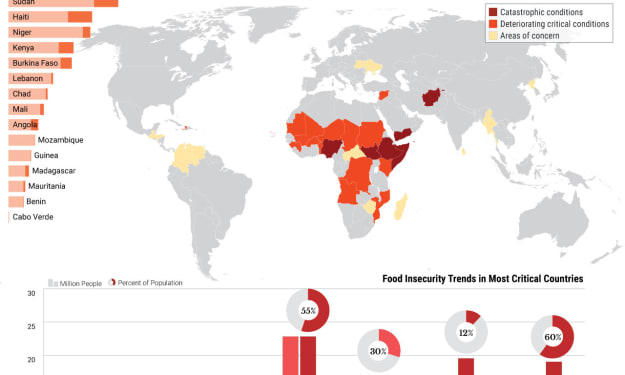Why Are Fences Suddenly Reappearing All Over DC?
Exploring the Surge in Fences Across Washington DC

Introduction to the sudden reappearance of fences in DC
In recent weeks, the streets of Washington, D.C. have witnessed a peculiar resurgence – the installation of fences and barriers in various parts of the city. These temporary structures, once a familiar sight during times of heightened security, have once again become a topic of discussion and debate among residents, visitors, and officials alike.
The return of fences in the nation's capital has sparked curiosity and raised questions about the underlying reasons behind this move. While some view it as a necessary measure to ensure public safety, others perceive it as an infringement on personal freedoms and a symbol of divisiveness.
Historical context of fences in DC
Fences and barriers have played a significant role in the history of Washington, D.C., particularly during times of civil unrest, protests, or major events. They have been employed as a means of crowd control, securing perimeters, and maintaining order in the face of potential threats.
One notable instance was the erection of fences around the White House and other federal buildings following the September 11th attacks in 2001. These measures aimed to enhance security and protect critical infrastructure in the wake of the tragic events.
Similarly, during major events such as presidential inaugurations or large-scale demonstrations, fences have been utilized to delineate designated areas and manage the flow of people, ensuring the safety of participants and bystanders alike.
Recent events leading to the reinstallation of fences
The recent resurgence of fences in D.C. can be attributed to a confluence of factors, including heightened security concerns and ongoing preparations for potential protests or civil unrest.
One of the primary catalysts for this move was the events surrounding the 2020 presidential election and the subsequent demonstrations that took place in the city. The aftermath of the election saw a significant influx of protesters, some of whom engaged in violent acts, prompting authorities to take proactive measures to maintain order.
Additionally, the upcoming anniversary of the January 6th Capitol riots has further heightened security measures, with officials seeking to prevent any potential repeat of the chaos and violence witnessed on that fateful day.
Security concerns and the role of fences
The installation of fences and barriers serves multiple purposes in addressing security concerns within the city. These structures act as physical barriers, deterring unauthorized access to sensitive areas and providing an additional layer of protection for government buildings, monuments, and other critical infrastructure.
Fences also aid in crowd control and management, allowing law enforcement agencies to effectively monitor and direct the flow of people during protests, rallies, or other large gatherings. By delineating designated areas, authorities can better ensure the safety of participants and minimize the risk of confrontations or escalations.
Moreover, the presence of fences can serve as a visual deterrent, discouraging potential agitators or individuals with malicious intentions from engaging in disruptive or unlawful activities.
Impact on the local community and businesses
While the installation of fences may address security concerns, it has also had a notable impact on the local community and businesses within D.C. Many residents and business owners have expressed frustration over the disruption caused by these barriers, citing inconveniences in daily commutes, reduced foot traffic, and a general sense of unease.
Businesses located in areas where fences have been erected have reported a decline in customer footfall, as the barriers create an unwelcoming atmosphere and deter potential patrons from visiting their establishments.
Furthermore, the presence of fences has raised concerns about the city's overall aesthetic appeal and its ability to attract tourists and visitors. The sight of barricades and barriers can create an impression of a city under siege, potentially deterring travelers and impacting the local tourism industry.
Public opinion surrounding the return of fences
The return of fences in Washington, D.C. has sparked a heated debate among residents, with opinions divided on the necessity and appropriateness of these measures.
Supporters of the fences argue that they are a necessary evil, prioritizing public safety and security over potential inconveniences. They cite the need to protect the city's residents, visitors, and critical infrastructure from potential threats, particularly in the wake of recent events and ongoing security concerns.
On the other hand, critics view the fences as an overreaction and a violation of civil liberties. They argue that the barriers create an atmosphere of fear and mistrust, undermining the very principles of freedom and democracy that the nation's capital is meant to represent.
Some have also questioned the effectiveness of the fences, arguing that determined individuals with malicious intent will find ways to circumvent these measures, rendering them largely symbolic gestures.
Comparison to past instances of heightened security in DC
The current situation in Washington, D.C. draws parallels to previous instances of heightened security measures in the city. Following the September 11th attacks, for example, a similar surge in fencing and barriers was observed, with the aim of safeguarding critical infrastructure and ensuring public safety.
However, the current circumstances differ in their prolonged nature and the broader scope of areas affected. Unlike previous instances where fences were concentrated around specific locations or events, the current deployment of barriers spans multiple neighborhoods and thoroughfares, creating a more pervasive sense of heightened security measures.
Additionally, the current situation is further compounded by the ongoing COVID-19 pandemic, which has already imposed restrictions on public gatherings and movements, adding an additional layer of complexity to the issue.
Alternative solutions to address security concerns
While fences and barriers have been the primary solution implemented by authorities, some experts and stakeholders have proposed alternative approaches to address security concerns in a more balanced and sustainable manner.
One suggestion involves the increased use of advanced surveillance technologies, such as closed-circuit television (CCTV) systems and facial recognition software. These tools could potentially enhance monitoring capabilities without the need for physical barriers, allowing for a more open and accessible environment.
Another proposed solution involves strengthening community engagement and dialogue between law enforcement agencies and local residents. By fostering open communication and collaboration, authorities can better understand the concerns and needs of the community, while also garnering support and cooperation in maintaining public safety.
Additionally, some have advocated for a more targeted and strategic deployment of security measures, focusing resources on specific high-risk areas or events, rather than a blanket approach that impacts the entire city.
Future implications and potential changes in security measures
As the situation in Washington, D.C. continues to evolve, it is likely that the debate surrounding fences and security measures will persist. Authorities will be tasked with striking a delicate balance between ensuring public safety and preserving the city's openness and accessibility.
One potential outcome could be the gradual removal or reduction of fences in areas where the threat level has diminished, coupled with a more strategic and targeted approach to security measures based on ongoing risk assessments.
Alternatively, if security concerns persist or escalate, the city may witness a more permanent integration of barriers and fences into its urban landscape, potentially altering the city's aesthetic and character in the long run.
Regardless of the path forward, it is clear that the issue of fences and security measures in Washington, D.C. will continue to be a subject of intense debate and scrutiny, with stakeholders seeking solutions that prioritize both public safety and the preservation of civil liberties.
Conclusion: The ongoing debate over fences in DC
The sudden reappearance of fences in Washington, D.C. has ignited a complex and multifaceted discussion that touches upon issues of public safety, civil liberties, urban planning, and the very essence of what the nation's capital represents.
As the city grapples with the challenges posed by heightened security concerns and the potential for civil unrest, the installation of fences has emerged as a contentious and divisive solution. While some view these barriers as a necessary measure to maintain order and protect the city's residents and infrastructure, others perceive them as an infringement on personal freedoms and a symbol of a society gripped by fear.
The debate surrounding fences in D.C. is not merely a matter of physical barriers; it is a reflection of the broader societal tensions and ideological divides that permeate contemporary discourse. It raises questions about the balance between security and liberty, the role of government in protecting its citizens, and the impact of such measures on the fabric of urban life.
As the city navigates this complex landscape, it is imperative that all stakeholders – from government officials and law enforcement agencies to residents, business owners, and civil rights advocates – engage in open and constructive dialogue. Only through a collaborative and inclusive approach can a sustainable solution be found, one that upholds the principles of freedom and democracy while ensuring the safety and well-being of all who call Washington, D.C. home.
As the debate over fences in Washington, D.C. continues, it is crucial for citizens to stay informed and engaged. Join the conversation by following trusted news sources, attending public forums, and voicing your concerns to local representatives. Together, we can shape a future where public safety and civil liberties coexist harmoniously in the nation's capital.
About the Creator
Kevin MacELwee
"Hello, my name is Kevin, a former electrician and construction worker now exploring online entrepreneurship. I'm passionate about animal welfare and inspired by 'Rich Dad Poor Dad' by Robert Kiyosaki. I also have a YouTube channel as well.
Enjoyed the story? Support the Creator.
Subscribe for free to receive all their stories in your feed. You could also pledge your support or give them a one-off tip, letting them know you appreciate their work.






Comments
There are no comments for this story
Be the first to respond and start the conversation.